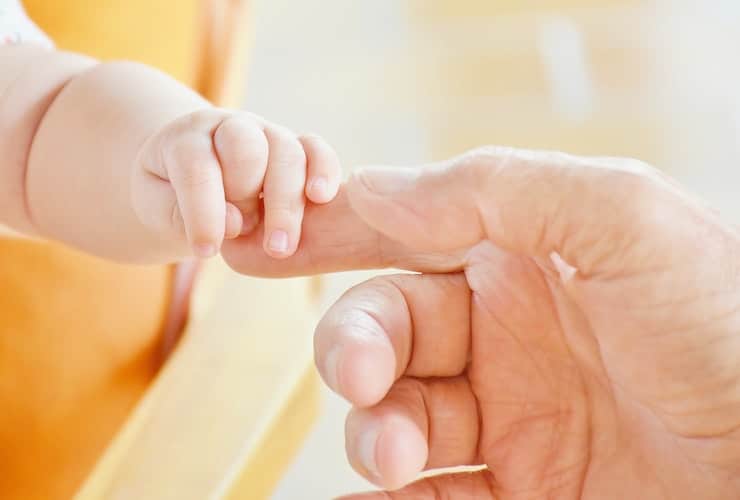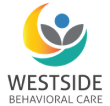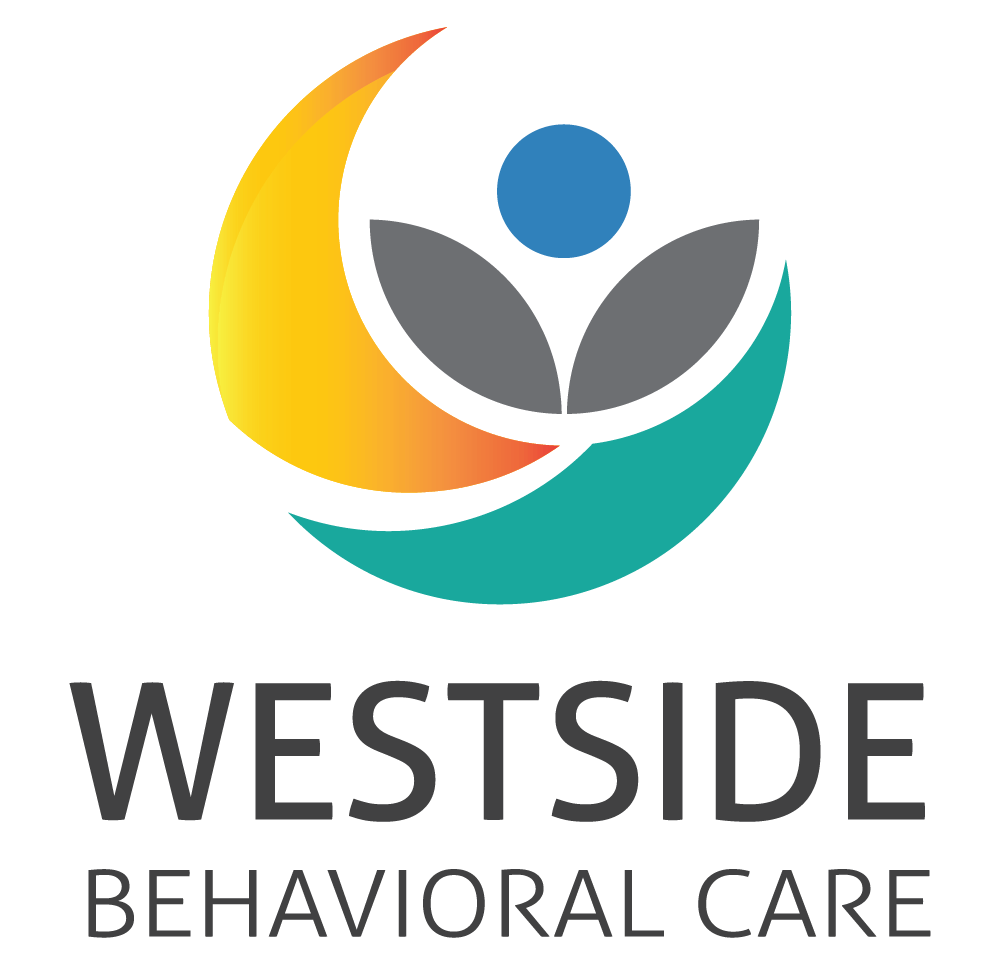How Do I Know If I Have Depression?
“Everyday is a second chance.”
— Anonymous
Have you ever had days when you hated the thought of waking up in the morning? Maybe you’ve been struck by a feeling of apathy and felt as if all your efforts would never pay off in the long run. So why bother putting in the effort at all? Some people don’t even want to start their days because then they’ll be expected to finish it.
This is what depression can look like.
Depression affects more than 264 million people of the world and carries a lot of misconceptions and social stigma around it. After reading this article, you’ll be able to tell if you or someone you know might be experiencing clinical depression that deserves medical intervention. Or if they’re simply feeling low and sad instead.
The Silent Killer
There are plenty of people with depression that don’t seek out treatment because of how they might be perceived. On the other hand, there are people walking around with self-diagnosed depression that could be misleading everyone on what actual depression looks like and contribute to the social stigma instead. Ignoring symptoms of depression can give rise to other serious illnesses such as diabetes, cancer, heart disease, or chronic, debilitating pain. Depression is manageable and may be treated with the medical intervention or therapy. Everyone feels sadness. It’s a completely normal human emotion. There are common triggers in life that lead to a condition known as situational depression, which most confuse with serious, major depression instead.
Situational depression can be triggered by a host of events such as –
- Job loss
- A breakup
- The death of a loved one
- A serious accident
- Major life changes
- A toxic love life or toxic work-life
Situational depression is a perfectly normal response to a traumatic event that is short-term and often resolves itself without any medical intervention.
If you have situational depression, you might have –
- Feelings of hopelessness
- Inability to concentrate

- Frequent crying episodes
- Restlessness
- Anxiety
- Withdrawal from normal activities
Clinical depression is a much more serious form of situational depression. It’s formally known as major depressive disorder, and it can be severe enough to affect your day-to-day routine. The Diagnostic and Statistic Manual of Mental Health Disorders (DSM-V) speculates that major depressive disorder might be caused by genetic factors and substance abuse. Or possibly even due to issues with your neurotransmitters.
Clinical depression can carry much more severe symptoms such as :
- Significant weight loss or weight gain
- Significant increase or decrease in appetite
- Being unable to make simple decisions
- Constant irritability
- Thoughts of suicide to end the pain
- Hallucinations
- Manic episodes
- Chronic pain
And depression doesn’t look the same for everyone, either.
Children might become cranky, anxious, refuse to go to school, or cling to a parent. They might worry about one of their parents dying and how they would cope after that. Teenagers might get into problems at school, have low self-esteem, get easily frustrated or develop eating disorders. Women, in particular, are especially susceptible to depression because of the biological life cycle and hormonal factors unique to them. Middle-aged adults experience the loss of libido, night-time awakenings, and digestive issues that don’t seem to go away. Older adults might report a total lack of emotions and feeling numb rather than anger or irritability. They’re also more likely to have medical conditions that might contribute to their depression. In severe cases of depression, you will be able to notice memory loss, which resembles a form of pseudo-dementia.
If you’ve been battling depression for a while, you might have adopted unhealthy coping mechanisms as well. Drinking, smoking, and drugs might have helped you power through the pain just so you can live your day-to-day life. These can cause health issues that your doctor might notice before your depression and lead to misdiagnoses as well.
How Can I Get Treated?
Talk with your health care provider. There are effective medical treatments that help with the symptoms and can tackle the root problem as well. Psychological treatments such as cognitive behavioral therapy or interpersonal psychotherapy are scientifically proven to provide relief. If your condition is severe, a professional might prescribe antidepressant medications such as selective serotonin reuptake inhibitors or tricyclic antidepressants. Psycho-social treatments and face-to-face therapy are highly recommended. While antidepressants are safe and effective, they must never be the first line of treatment for children and teenagers, for whom alternative treatments should be considered. If you or someone you know is feeling symptoms of depression, you Kaiser Permanente Insurance may cover your therapy sessions. Our facilities in Denver, Aurora, and Arvada are open Monday through Friday, 8:30 a.m. to 5:00 p.m. Browse through therapist profiles to find a therapist who meets your needs.
Kinds of Depression, Symptoms, & Treatments
There are various kinds of depression each with distinctive qualities, triggers, and results. Being aware of which kind of depression you are coping with will go a long way toward managing signs and symptoms in addition to choosing the best treatment plan.
Persistent depressive disorder (dysthymia)
Dysthymia is like a low-grade depression but it is chronic, lasting a minimum of 2 years. While not always crippling, dysthymia can prevent an individual from fully taking pleasure in existence or feeling well. Additionally, individuals with dysthymia may go through a number of instances of major depressive disorder (double depression) within their lifetime.
People who are suffering from dysthymia frequently seem like they have been depressed for a long time, as though being down all the time is “just who they really are.” However, dysthymia can be treated, permitting people to live considerably enhanced lives.
Postpartum depression
Postpartum depression may seem to be the “baby blues,” in the beginning, but signs and symptoms tend to be more intense, more durable and hinder daily tasks and the opportunity to look after the baby. Postpartum depression is a serious condition that needs active treatment and emotional support for the parent. Left without treatment, postpartum depression may last for a year or longer.
Seasonal affective disorder (SAD)
Seasonal affective disorder (SAD) is indicated by the start of depression throughout winter, and is more prevalent in northern environments. The depression generally lifts throughout spring and summer when there’s more contact with natural sunlight.
Atypical depression
Atypical depression is a very common subtype of depressive disorder. It’s indicated by temporary “mood lifts” as a result of an optimistic event. However, the lifts tend to be fleeting and the depression returns. Other signs and symptoms include elevated appetite and putting on weight, excessive sleeping and elevated sensitivity to rejection.
Psychotic depression
Psychotic depression is indicated by depressive disorder coupled with some type of psychosis, for example, hallucinations and delusions. People with psychotic depression might need to be put in the hospital because they are frequently unable to look after themselves.
Depression and Depressive Episodes Symptoms
The severity and time period of depressive symptoms will be different for every person. However, you will find some common symptoms across most kinds of depression; for example:
- Feelings of hopelessness and helplessness
- Feelings of worthlessness
- Feeling physically drained
- Insomnia or oversleeping
- Overeating or appetite loss
- A persistent sense of sadness and/or anxiousness
- Difficulty concentrating
- Ideas of suicide, or suicide attempts
Treatments for depression
Before care can be given, possible accompanying ailments, including anxiety, anger management, trauma, relationship discord, drug or alcohol abuse, and elevated risk for self-harm will be assessed.
Therapy and Counseling
As a victim of depression, you may find that despite your attempts at getting over the disorder, you are not having adequate success and also are finding too little social support. This is exactly where the help of professional mental care practitioners, psychologists and therapists comes into the picture. Many people need someone to listen to and understand them while offering them helpful advice specifically tailored to their life situations.
Antidepressant Medication
Numerous antidepressant medicines are also available to treat depression, categorized through which chemicals inside the brain (serotonin, norepinephrine or dopamine) they affect. Medication is prescribed by physicians, especially psychiatrists. It is possible and often ideal to combine medication with therapy.
Understanding Depression
Depression is a commonly seen disorder of the mind. If you have lost interest in life, like to be alone and/or consistently feel sad, you are more likely suffering from mood disorder, or depression. It is not uncommon for people to go through mood changes. Feelings often change when you go through different circumstances in life. While successes lead to happiness and excitement, failures make you feel low. These are normal feelings and should not be confused with mood disorder. Depression is different. The symptoms associated with it can be observed over several days, weeks, months or even years. The disorder, if left untreated for a long time, can prevent you from living your life the way you want to.
Depression symptoms and depressive episodes
The signs and symptoms of depression vary with each individual, however, there are some common indications:
- Sad for most part of the day, particularly when you wake up
- No more interested in activities you once had passion for
- Sudden weight gain or weight loss
- Loss of sleep/sleeping too much
- Feeling restless time and again
- A feeling of agitation for no reason
- Feeling tired all the time
- Feeling guilty
- Finding it hard to think, focus and make decisions
- Thoughts of suicide
- Changes in eating habits
- Suffer aches, digestive problems and/or cramps that do not subside even after taking medication
- A feeling of emptiness or worthlessness
- Confusion
What are the causes of depression?
Studies are still on to determine what exactly causes clinical depression. For now, we know it is a complicated disease and can occur for different reasons. While some people suffer depression due to the condition running in their family, several others might go through the mood disorder when they lose someone dear. There are many other possible causes, which are discussed below.
Abuse: A physical or emotional abuse experienced in the past can cause you to get depressed later in life.
Medication: Certain antiviral drugs and those used to treat some skin conditions can increase the risk for depressive disorder.
Conflicts: You are more prone to depression if you are sensitive and cannot stand disputes or conflicts with your friends or family members.
Death: Depression can also occur when you lose a loved one. Some people cannot overcome the grief, which leads to prolonged sadness and a lack of interest in life.
Genetics: Depression is a complex disease. You are more vulnerable to the disorder if you have a family history of depression. Unlike other psychiatric disorders, depression is caused by numerous genes exerting small effects, which makes it complicated.
Major Life Events: Losing a job or getting divorced can cause depression, for some, happy events like getting married or the birth of a child can also cause mood disorder. To put it in simple terms, anything stressful can cause depression and the cause can be different for everyone.
Serious Illnesses: Depression can also be the result of other serious medical conditions and the treatment received.
Substance Abuse: Drugs and alcohol make you happy temporarily, but over the long term, they are harmful. According to several studies, substance abuse is said to trigger depression.
Other Factors: Isolation from the social groups/family can contribute to developing depression. The other possible causes of depression are changes in the neurotransmitter levels of the brain, bipolar disorder, psychological and environmental factors.
What is the treatment of depression?
Fortunately, depression is a treatable condition.
- Set a daily schedule and work to bring structure into your life.
- Set small goals and start thinking you are capable of accomplishing them. When you feel you are worthwhile, things begin to fall into place.
- Exercise regularly.
- Eat healthy and balanced food. Do not overeat or stop eating. Plan your diet and try to stick to it. Of course, once in a while, you can have what you like and satisfy your craving!
- Sleep well. Remove all the gadgets, including TV and your mobile phones, from your bedroom and go to bed early in the night.
However, even after making the best efforts, if the symptoms persist and you are unable to handle them alone, look for a Kaiser therapist specialized in depression.
Postpartum Depression: More Than Just The Baby Blues?
Postpartum depression (also known as postnatal depression or PPD) is a mood disorder that arises after childbirth. While postpartum depression can occur at any time within the first year, symptoms typically appear between two weeks to a month after delivery. Postpartum depression is a serious psychological disorder that affects 10 to 15 percent of new mothers.
Child abuse depression
Child Abuse: A Major Cause of Major Depression According to a study just published by an international team of researchers, people who have suffered childhood abuse are more likely to be diagnosed with major depression after reaching adulthood, even more likely if they have inherited genes which cause a predisposition to the disorder of Severe Depression. Adult patients who hailed from various regions in Spain – with genetic predispositions to depression – were especially prone to the devastating and confusing after-effects of child abuse, regardless of the type of abuse suffered (psychological, physical or sexual) all similar depression symptoms. Dr. Blanca Gutiérrez, a professor of psychiatry at the University of Granada and the head researcher behind this investigation, says that the results published in the Journal of Psychiatry and Neuroscience are extremely important:
“Our results present a fundamental genetic-environmental model to explain this sort of therapeutic response.”
Dealing With Childhood Trauma
Childhood is the time to play, have fun, socialize and learn new things. But not all children are privileged to have a fulfilling and happy childhood. Some children become victims of abuse – physical, emotional or sexual, making their childhood the most traumatic stage of life. Such trauma, if unresolved, can mar children completely should they carry this burden into adulthood. The consequences of childhood traumatic experiences echo through various aspects of adult life and can lead to or worsen symptoms of many psychological disorders, such as depression, anxiety, borderline personality disorder, substance abuse, PTSD, bipolar disorder, panic attacks, and a significant variety of other behavioral issues. There is some research to suggest that victims of childhood trauma are more susceptible to health issues such as cardiovascular disease and stroke. Dealing with childhood trauma is difficult, especially without the right sort of help at the right time. Some people find it extremely difficult to revisit and explore the ramifications of their traumatic circumstances. Follow the suggestions below to cope better with childhood trauma:
Acknowledging the source of pain
First and foremost, acknowledge the presence of trauma. This may seem basic and automatic, but many traumatized individuals go out of their way to avoid anything and everything which is reminiscent of their past. Simply accepting the trauma makes it easier to address. Once the source of the difficulty is acknowledged, the process of letting go won’t be quite so difficult.
Address overreactions
Victims of childhood trauma find it quite natural to battle emotions which are intensified beyond what circumstances might otherwise demand. One of the best ways to take charge of such feelings is to seek therapy with a Kaiser therapist who has experience and specialization in this area.
Be patient
Traumatic experiences attempt to subtract joy from life and trap trauma victims in the past, imprisoning them in the shackles of prolonged negativity and distress. Be patient. Be self-forgiving. Seek help. Open plenty of time to address the problem effectively and heal.
Symptoms of postpartum depressive episodes
- Anxiety at being a new mother. The new mother may feel as though she is incapable of handling all the new responsibilities and that perhaps motherhood was a wrong decision.
- Extreme sadness and depression
- Lack of sleep or sleeping too much
- Lack of interest in activities
- Decreased energy
- Irritability and anger, sometimes at herself and sometimes at the baby
- Loss of appetite
Who suffers from postpartum depression?
 What people often don’t realize is that postpartum depression can actually affect both sexes and not just the mother of the child. The exact cause for PPD is uncertain and likely varies from person to person; a sudden onset is largely dependent on a combination of biological and emotional factors. For the mother of the child, hormonal changes are at play, while both parents may be battling the effects of sleep deprivation. The stress of having a newborn child is usually felt by most families, so it can sometimes be tricky to differentiate between postpartum depression and what is sometimes called the “baby blues” — a mood disorder with less severe symptoms than postpartum depression. If unpleasant feelings are continuing to persist after two weeks, it’s a good idea to visit a doctor or set up an appointment with a licensed therapist.
What people often don’t realize is that postpartum depression can actually affect both sexes and not just the mother of the child. The exact cause for PPD is uncertain and likely varies from person to person; a sudden onset is largely dependent on a combination of biological and emotional factors. For the mother of the child, hormonal changes are at play, while both parents may be battling the effects of sleep deprivation. The stress of having a newborn child is usually felt by most families, so it can sometimes be tricky to differentiate between postpartum depression and what is sometimes called the “baby blues” — a mood disorder with less severe symptoms than postpartum depression. If unpleasant feelings are continuing to persist after two weeks, it’s a good idea to visit a doctor or set up an appointment with a licensed therapist.
Treatment of depression and postpartum depression
Treatment for a diagnosis of postpartum depression is similar to other mental health and therapy related issues: counseling, medication or both. Effective therapy treatments include:
- EMDR
- Mindfulness-based cognitive therapy
- Traditional cognitive behavioral therapy
- Psychodynamic therapy and more
 It is important to remember that postpartum depression can happen to anyone and it is not the mother’s or child’s fault. Seeking help for PPD may be more difficult for new parents due to the idea that having a new baby should be a “happy” time. Additionally, it can be a challenge simply because of how much time and energy it takes to care for a newborn – it may feel overwhelming to add another appointment on an overcrowded calendar. However, the welfare of a child is best achieved by having healthy parents.
It is important to remember that postpartum depression can happen to anyone and it is not the mother’s or child’s fault. Seeking help for PPD may be more difficult for new parents due to the idea that having a new baby should be a “happy” time. Additionally, it can be a challenge simply because of how much time and energy it takes to care for a newborn – it may feel overwhelming to add another appointment on an overcrowded calendar. However, the welfare of a child is best achieved by having healthy parents.
If you believe you may be suffering from postpartum depression, the best thing you can do is reach out to a loved one you trust and to seek the advice of a medical professional and/or a therapist. Many therapists have flexible schedules, and some even offer tele-therapy for remote treatment.
The following therapists at Westside Behavioral Care specialize in treating postpartum depression:
Holiday Blues
Although everyone has experienced sadness in their lives, the sadness that occurs during the holiday season is a unique feeling. Especially felt during November and December, holiday depression is commonly referred to as the “holiday blues”. The holidays are associated with festivities and Christmas and are meant to be a time of happiness. Nonetheless, for some people, this isn’t the case and the period may be filled with sad reflection, feelings of loneliness, and anxiety. It isn’t unusual to find that people who usually await the holidays with excitement may feel stressed and depressed too. Christmas can be a highly emotional holiday, demanding and busy, leaving a lot of folks exhausted and overwhelmed.
Prior Issues
People who have had mental health issues in the past may be particularly predisposed to the holiday blues. A large percentage of people have reported that their existing mental health issues have only gotten exacerbated with the onset of the holiday season. The blues during holidays apparently make anxiety and depression much worse than it is at times during the rest of the year.
Signs of Oncoming Sadness
One of the typical symptoms of the holiday blues is a persistent feeling of being sad. This is recurring, usually starting at the beginning of the holidays. Varying in intensity and duration, people may feel blue at certain times for no obvious reason. There may be short periods of feeling upbeat and happy too. Signs of holiday depression may include the following:
• Experiencing feelings of low self-worth
• Experiencing pangs of guilt
• Loss of appetite or an increase in appetite
• Loss of weight or an increase in weight
• Sleep pattern alterations
• Having trouble concentrating
• Loss of joy in doing things that were once enjoyable
• Experiencing feelings of worry, anxiety, or tension
The difference between SAD and Holiday Blues
Seasonal Affective Disorder or SAD might have symptoms of feeling sadness during the holiday months. SAD is a sub-type of major depressive disorder or MDD. SAD may be experienced by people at certain months of the year or be related to particular seasons. Symptoms of the holiday blues and SAD may have to warrant a differential diagnosis as they are difficult to distinguish. The clues to look for, though, are the severity of symptoms present and their duration.
The Clues that Tell You About the Holiday Blues
Holiday depression starts around the early part of November, when it is indicative of the holiday blues. The feeling of being sad disappears around the start of the new year. The symptoms of seasonal affective disorder, on the other hand, lasts for about 40 percent of the whole year. Usually, signs show in late fall and the early part of winter, receding in the spring or early summer. If you have the holiday blues, symptoms will be generally mild. You may have bursts of feeling sad, but you can go about your normal activities with interspersed periods of feeling good. In case you are diagnosed with seasonal affective disorder, your symptoms will be more severe, and often debilitating. You may not be able to get out of bed and feel really out of it.
Seek Help
As the holiday season passes, you should feel much better with symptoms of sadness lifting. In case feelings of sadness persist or you still experience anxiety, you should consult your doctor. You may have a mood disorder that may be more significant than just the holiday blues. Blues during holidays may even pass without you thinking anything of it.
Diagnosis of the Blues
Just because the holiday blues is not officially recognized as a psychiatric condition, doesn’t mean that you shouldn’t talk to your physician. You should mention any symptoms that concern you.
What are the Causes?
People with depression may go through the holiday blues for several reasons. Possible causes may include one or some of the following:
• Hectic holidays – The holiday season can be a busy time for many. It’s difficult to catch up with household chores, much less catch your breath with a nice cup of coffee. Holiday depression may occur because you feel overwhelmed and helpless.
• Eating and drinking too much – When you experience a bout of sadness, you may reach for the fridge or a bottle of alcohol. Be assured that this is not the way to cope. In fact, if you do indulge in food or alcohol, thinking you will get comfort, you are wrong. Instead of relieving symptoms, they may get worse.
• Loneliness – When you can’t be close to loved ones, you may feel specifically lonely and isolated during this season that is usually celebrated with family.
• Financial burden – The holidays are a time when you may be extending yourself and putting undue financial stress on yourself. Struggling so that you can afford gifts for your loved ones only leads to more anxiety, and ultimately, the blues during holidays.
• Expectations – Many people have unrealistic expectations for the holiday season. Things may not pan out the way you thought they would. For instance, a friend may cancel their trip to be with you. Others may expect you to behave in a certain way, and you may not feel like doing so. All of this may cause stress.
What is seasonal affective disorder?
Seasonal Affective Disorder is a seasonal disorder that can impact the mental health of people from different age groups. There are many types of depression and SAD is one of them. The distinguishing feature is that this is a seasonal condition that often resolves on its own as the season changes. From the close of fall to the early winters, some people tend to feel gloomier as the days become shorter and darker. Various kinds of treatment can help people dealing with SAD, including simulated light therapy to make up for reduced sun exposure. Melatonin and serotonin are essential for good sleep and better mood, respectively. Sunlight plays a critical role in ensuring that the body generates enough of these hormones. During the cold winter months, some people might experience a drop in these hormones which leads to mild to moderate depression. Another factor could be due to the change in the circadian rhythm with the changes in the daylight duration.
Symptoms of SAD
- Lack of interests in those activities that you usually love doing
- Trouble getting yourself out of bed in the morning
- Unusually long sleeping hours
- Crankiness and mood changes
- Weight gain
- Changes in the appetite
- Drop in the energy levels throughout the day
- Lack of focus
- Insomnia
Depending on the lifestyle, age, health of the individual, and the region where the person resides there could be a combination of more than one of the above symptoms.
How to Cope
The holiday blues aren’t a major psychiatric disorder and a cause for concern. Nonetheless, if symptoms are persistent beyond the holiday season, you must see a medical practitioner about treatment options. Otherwise, you may try to cope by having a few psychotherapy sessions just to get you through this temporary phase. Garnering social support is a good way to cope too. Seasonal affective disorder (SAD), also known as seasonal depression, is a mental health condition that certain individuals might develop owing to a seasonal change. Most individuals who experience this mood disorder typically begin to develop symptoms with the start of the fall season. The symptoms worsen during the winter months, and they gradually go away on their own in the spring or summer. Some individuals may also experience a form of SAD known as ‘summer depression’, which starts in spring or summer and ends either in fall or winter. If you experience this mood disorder every year, you’d know it can have a variety of negative effects on how you think and feel. While seeking treatment is recommended for keeping the effects of SAD at bay, there are some other ways to minimize the condition’s effects as well. In this article, we’ll take a closer look at what those ways are.
start to prepare for it before the symptoms hit
Typically, the symptoms of SAD develop during the same period every year. This gives you an advantage – you can prepare your mind for the condition, so it doesn’t overwhelm you when the symptoms start to show. So, when fall is around the corner, you should start engaging in activities that you enjoy, including social activities with friends and family. These activities will lift your spirits and give a much-needed boost to your mental health. You should also spare some time every day for exercise, as regular physical activity can have numerous benefits for your psychological health as well. Don’t wait for the symptoms to kick in before starting these activities. Once depression takes its hold, it can be incredibly difficult to motivate yourself to engage in activities, even the most enjoyable ones.
Practice healthy eating
What you eat has a lot to do with how you feel. Simply put, if you eat a ton of junk food, there are bound to be negative consequences for your body, which will, in turn, affect your mental health as well. So, it’s best to eat healthy food. Increasing your consumption of fruits and vegetables is recommended, as these are slow-burning foods that provide sustainable energy. These foods are much better than carbs, which drastically enhance energy but tend to make people feel lazy during mid-day. We recommend working with a certified nutrition coach to improve your diet during your SAD phase. Also, the occasional bit of junk food, cookies and candies won’t do much damage.
Let the light in
While the root causes of SAD are still not very well understood, one thing’s clear – the condition worsens when there’s a lack of sunlight. Of course, during the winter months, there will be many days when the sun isn’t at the peak of its powers. That’s why it’s essential that individuals with SAD expose themselves to as much natural light as possible. For example, take a walk outside when the sun’s at its strongest (typically noon). When staying indoors during the day, keep the blinds open, so natural light finds its way in. Remember, once the sun goes down, you’ll be reliant on indoor lighting, which is known for negatively affecting symptoms of SAD, as it’s significantly dimmer compared to natural light.
Practice aromatherapy
In recent years, aromatherapy has been suggested as one of the management methods for SAD. It involves using essential oils, which can be effective in managing symptoms of not just depression, but insomnia and anxiety as well. While aromatherapy on its own won’t make much of a difference in terms of improving SAD symptoms, it can be beneficial when combined with some other soothing activity. Experts say that essential oils influence certain areas of the brain that dictate mood and sleep. However, you must remember to practice safe aromatherapy, as the use of essential oil diffusers or the ingestion of essential oils can result in harmful effects. Ideally, you should use aroma sticks featuring absorbent materials and apply the oils on the sticks.
Increase your Vitamin D intake
If your exposure to sunlight is limited, you’re likely to experience Vitamin D deficiency, which is known to exacerbate the symptoms of depression. That’s why it’s vital that you take vitamin D supplements during the winter months. While there’s no guarantee that increasing vitamin D intake will eliminate SAD symptoms altogether, it will definitely prevent vitamin D deficiency, which can also pose other health risks. Before you start taking a supplement, we recommend consulting a doctor for testing your current levels of vitamin D. You should only take supplements if your vitamin D levels are lower than what’s optimum.
Bright light therapy
Bright light therapy involves the use of phototherapy boxes for keeping an individual’s circadian rhythm ticking. When one’s circadian rhythm is on track, it typically has mood-boosting effects. The lights given off by phototherapy boxes mimic natural light from the sun, and they’re much brighter than the lighting offered by regular bulbs. Phototherapy boxes also provide lights in a variety of wavelengths. Ideally, you should practice bright light therapy in the morning within an hour after waking up. You could also seek treatment for your SAD by working with a skilled therapist. This is where health insurance packages like Humana and Kaiser Medicare can come in and play an important role in covering your expenses. Therapists across Littleton, Aurora, and Westminster accept insurance claims provided by Kaiser Click the link to find Kaiser Therapist to help with seasonal depression https://www.westsidebehavioralcare.com/ Winter has different effects on different people. Some of the common things like minimal exposure to sunlight and exposure to sudden weather changes can affect people’s physical and mental state. Seasonal affective disorder, or SAD, is known to affect millions of people around the world. With COVID having changed what “normal” feels like, its relationship with SAD is a topic worth understanding.
How COVID impacts SAD
With COVID, there is a pressing need for social distancing. People who are usually socially active might experience a sudden change in their lifestyle. During the cold winter months as the SAD risks creep in, the reduced human interaction could act as an additional trigger. With this being the first pandemic of its kind, COVID and SAD’s actual relationship is yet to be fully understood. But due to COVID, travel during the holiday season as well as parties and social gatherings have all changed. With these social activities dwindling, and with people spending more time indoors, exposure to sunlight tends to drop further. Across the globe, COVID-induced anxiety has been prominent. Political and economical changes have also been affecting the mental health condition of individuals in various age groups. As a result, even people who have never experienced seasonal affective disorder earlier in their life might become vulnerable to it this year. Those who usually experience mild symptoms might observe a slightly higher intensity of depression this year.
Tips to manage seasonal affective disorder during the pandemic
COVID has been stressful for people in different parts of the world in several ways. As winter blues worsen the condition various self-care tips can help you focus on your mental health. Here are some ways to alleviate the symptoms of SAD during the pandemic:
Exposure to sunlight
Staying at home is considered the best way to stay safe in order to avoid contracting infections from unknown sources. But there are many ways in which you can still ensure that your body gets enough sunlight every day. Spending a few minutes daily in your backyard or even going for a short walk in your neighborhood can give your body its daily dose of vitamin D from sunlight.
Do not shy away from seeking medical assistance
Talk to your doctor if you usually don’t experience SAD symptoms and suddenly notice them this year. It would also be time to visit your doctor if you notice your usual symptoms worsening this year. There are various treatments available for SAD including phototherapy. Psychotherapy can also be helpful for individuals who are having suicidal thoughts or extreme depression during the winter months. Depending on the symptoms some patients might be given anti-depressant medication if required.
Get into a routine
Changes in your body’s natural clock (or circadian rhythm) is one of SAD’s main causes. Establishing a routine can be very useful to minimize the risks and symptoms of SAD during COVID times. As the pandemic has pushed many people to work from home, most people have given up on routines. Darken your room by evening and let ample natural light during the day. Fix your sleep and wake timings. These are a few ways in which you can restore your circadian rhythm that has gone off-track.
Managing SAD
Besides all the above tips, eating a healthy diet, staying active, and staying connected with friends virtually can give you that much-needed boost. Professional help also provides the additional support you may need to manage SAD during COVID. It is easy to find and schedule an appointment with one of our therapists specialized in depression in Denver and nearby areas.
Overcoming Loneliness During COVID
These are unprecedented times. Life as we know it has changed for the time being. We don’t know when or if things will be back to normal. The world is struggling with a pandemic never seen before. While different illnesses have different symptoms and aftereffects, COVID has a unique effect- loneliness. We are used to going out daily for work, shopping or recreational activities. To be forced to stay at home for months on end can be disconcerting. The physical isolation and social distancing practiced due to COVID leaves people vulnerable to loneliness. It is worse for people who have caught the virus. Compulsory self-isolation in quarantine can lead to loneliness and depression.
Loneliness and its effect on mental health
Humans are social creatures. Social interactions are necessary for our mental well being. All of us may have felt lonely at some point in time. But this pandemic has brought along a prolonged spell of loneliness. The stress of catching the virus and resultant complications can add to our mental worries. The constant need to keep ourselves and our surroundings sanitized, and the continuous information about the virus can leave us jittery. This leaves us vulnerable to mental health issues like anxiety or depression.
Coping with loneliness
We should proactively make strategies to cope with this forced loneliness. There are various methods to ensure that loneliness does not overwhelm you and leave you depressed.
Set up a timetable
Staying at home does not mean you lose control of your life. Making a schedule for your daily activities will give you a feeling of being in control. Don’t laze around. Have a fixed time for waking up, eating your meals and exercising.
Keep yourself informed
Keep up to date information about the latest advice and developments regarding the spread of the virus. But resist the temptation of watching the news for hours or forwarding unreliable information on social media. It will add to your panic. Limit your source of information to reliable websites.
Journaling
Keep a journal to note down your daily feelings. After some days, you will be able to notice a change in your feelings. Write about any issues that disturb you.
Physical activity
Find time for regular physical activity. Physical activity will boost your immunity and mental health. Social media is filled with fitness videos. Find one that suits you. You could also do Yoga, Tai Chi or low impact workouts.
Recreation
Staying at home does not mean you should not have fun. An interconnected world gives you increased opportunities to pursue hobbies or improve your talent. Think of a hobby you always wanted to indulge in but never found time for. Now is the time for it. Find all the books you wanted to read. You can join online book clubs. Try out some exciting new dishes.
Online courses
The internet offers you a world of opportunities within your home. You can sign up for new courses which will help you professionally. You can also pick up new languages or new skills. There are various groups online which thrive on shared interests. Join a couple of groups that cater to your interests. You can learn a musical instrument or new dance steps from the many videos on social media.
Connect
Physical distancing need not prevent us from connecting with each other. We can always make phone calls or write letters. Check on your elderly relatives who are most vulnerable to loneliness. Organize birthdays and anniversaries using video chat calls. You can play games online with your friends or colleagues. The online world offers multiplayer games where you can enjoy playing games with strangers. You can start a conversation or respond to other people’s posts on social media.
Pamper yourself
Now is the time to take care of yourself more than ever. Eat healthy food. Sleep well. Adopt relaxation techniques. Give yourself a foot massage. Indulge in homemade face packs. Go for an elaborate hair care routine. Drink herbal tea. Watch your favorite movies. Go through old photo albums but avoid ruminating over negative things. Download an adult coloring book. Many museums and tourist spots offer a virtual tour of their attractions. Go ahead and indulge yourself.
Asking for Help
Even after all your attempts, if you still find yourself battling anxiety or depression, ask for help. Tough times call for tough measures and there is no need to be embarrassed about asking for help. Remember, these tough times won’t last forever. A trained therapist will help you to combat your negative feelings. Therapy sessions are offered online or in-person, which will help you to clear the clutter in your mind and face the future confidently. Schedule an appointment with a Kaiser therapist in Denver or nearby area that meets your needs.
Cognitive Behavioral Therapy: Who Can Benefit?
Cognitive behavioral therapy is a commonly used, evidence-based practice that’s employed to treat mental health conditions such as anxiety and depression. While perhaps not for everyone, Cognitive Behavioral Therapy (or “CBT”) treatment has proven effective for a number of individuals who wish to change irrational and/or negative patterns in their cognitions by attempting to regulate their thoughts, feelings and behavior. The idea is that by influencing one of these three self-monitored functions, the rest will be affected.
CBT Approach vs. Other Psychotherapy
CBT presents a significant departure from traditional psychotherapy, wherein a therapist might use a psychoanalytic approach with an individual by searching for unconscious meaning behind certain beliefs and behaviors and making a diagnosis from there. Instead, CBT is action and problem based methodology, focusing primarily on coping strategies to treat specific issues. The argument can be made that CBT is less about self-reflection and more about learned solutions – the therapist’s job is to help you discover and utilize effective practices that will both combat your symptoms and also achieve specific goals of your therapy.
Cognitive Distortions and Restructuring
The devaluation of cognitive distortion is a key element to a mental health expert’s approach to CBT. This type of thought pattern is described as a system of beliefs that isn’t based in reality, as well as exaggerated, irrational thinking. These distortions can create negative feelings and an unfavorable outlook on the world, likely leading to distressed mental states, emotional dysfunction and continued depression/anxiety. Through the use of cognitive restructuring (or “CR”), a therapist can help guide you toward having a more rational, realistic reaction to a stressful situation. CR is designed to eliminate the automatic thoughts that occur in a cognitive distortion and instead provide you with the feeling of being in control. By changing your behavior, CBT therapy is meant to reduce your negative perceptions and subsequently lead to a positive impact on your attitudes, beliefs and overall mental health. It is easy to find and schedule an appointment with one of our therapists and counselors that specialize in CBT.
What is transcranial magnetic stimulation?
Transcranial magnetic stimulation, or TMS, is a noninvasive form of brain stimulation. TMS devices operate completely outside of the body and affect central nervous system activity by applying powerful magnetic fields to specific areas of the brain that we know are involved in depression. TMS doesn’t require anesthesia and it is generally exceptionally well tolerated as compared to the side effects often seen with medications and ECT. The most common side effect is headache during or after treatment. A rare but serious side effect is seizures, and TMS may not be appropriate for people at high risk such as those with epilepsy, a history of head injury, or other serious neurologic issues.
Biofeedback Therapy
Biofeedback is a mind-body therapy that can improve physical and mental health. During a biofeedback session, a practitioner will use painless sensors to measure certain bodily functions. You will see the results on a screen, then test ways to change the results. With practice, you will be able to make adjustments without the equipment.





